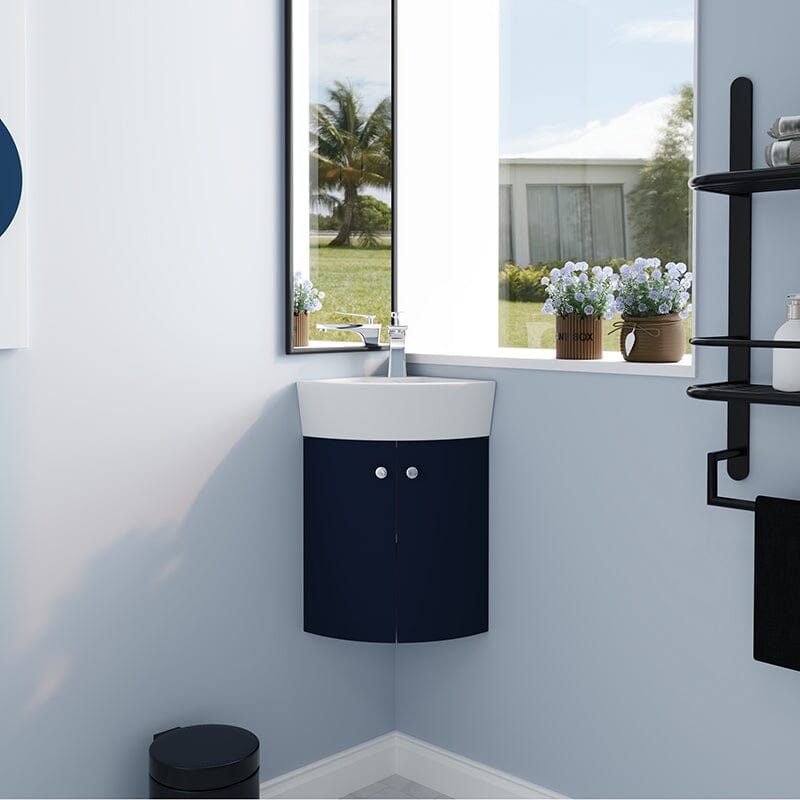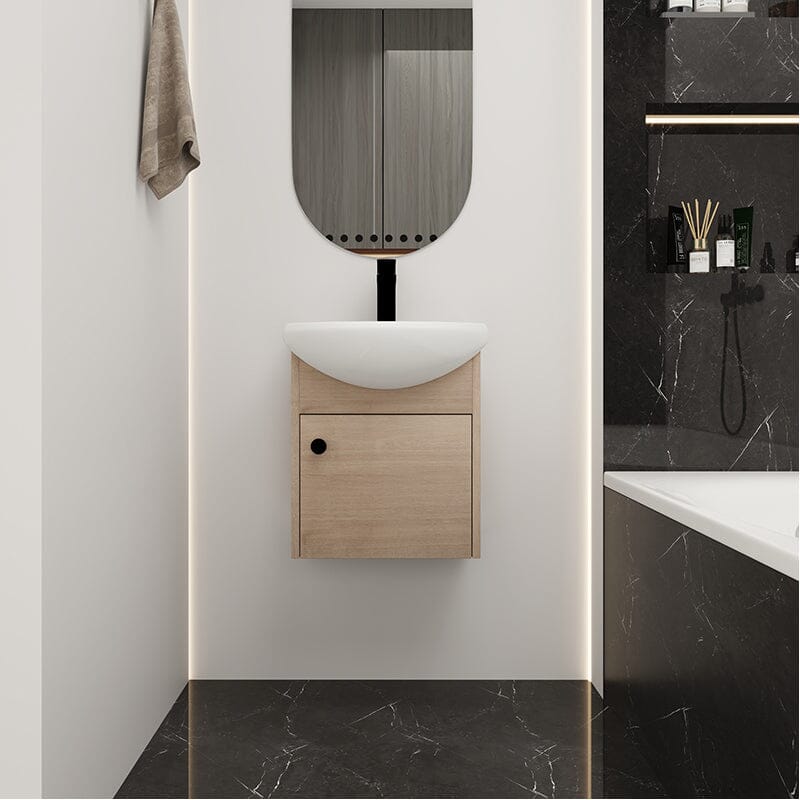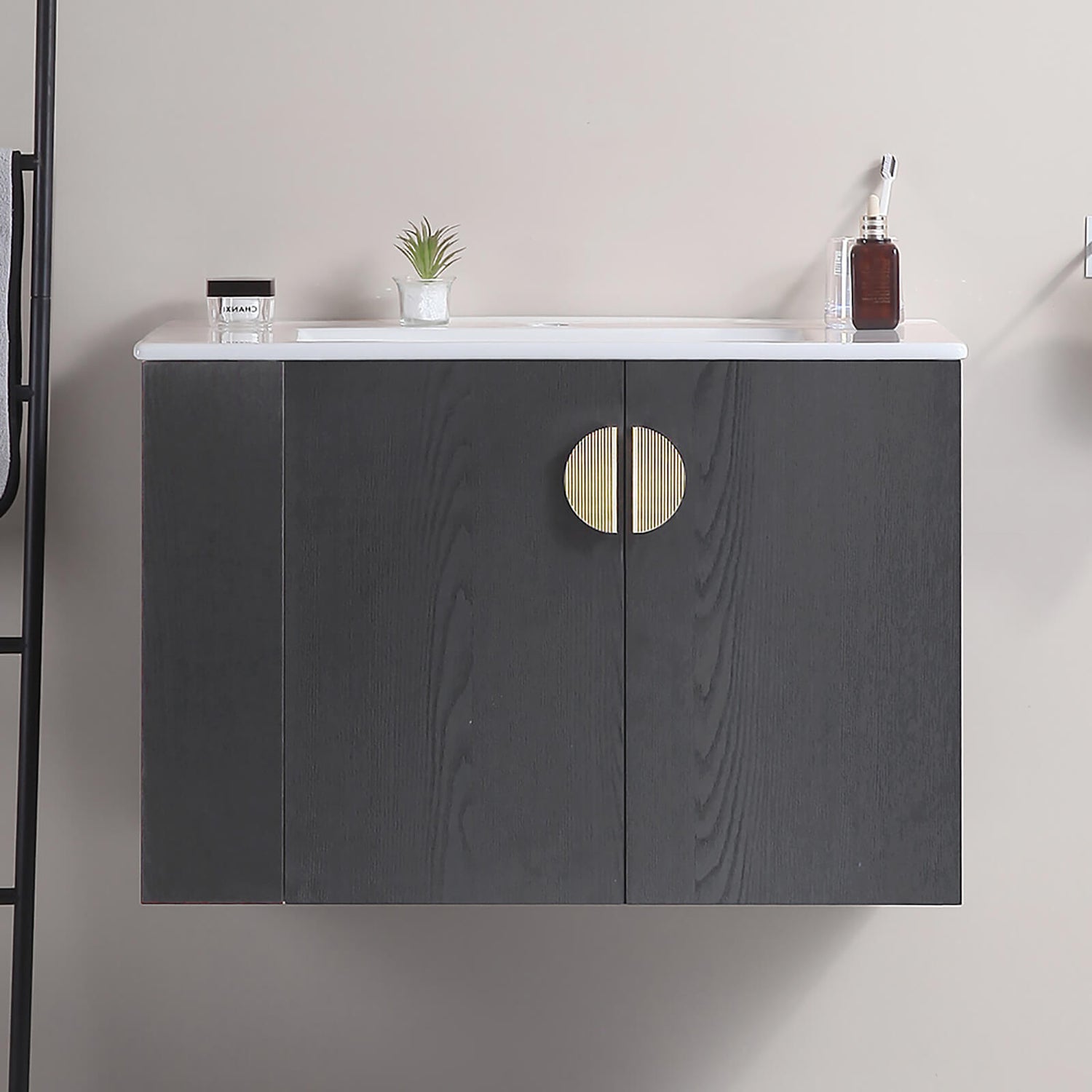Choosing the right size for a bathroom vanity isn't just about aesthetics—it directly affects comfort, space efficiency, and the overall harmony of your bathroom design. A poorly sized vanity can lead to inconvenience, wasted space, or a cramped environment, diminishing both functionality and beauty. In this article, Giving Tree Home provides a comprehensive breakdown of standard bathroom vanity dimensions, along with practical measurement tips to help you build your ideal bathroom.
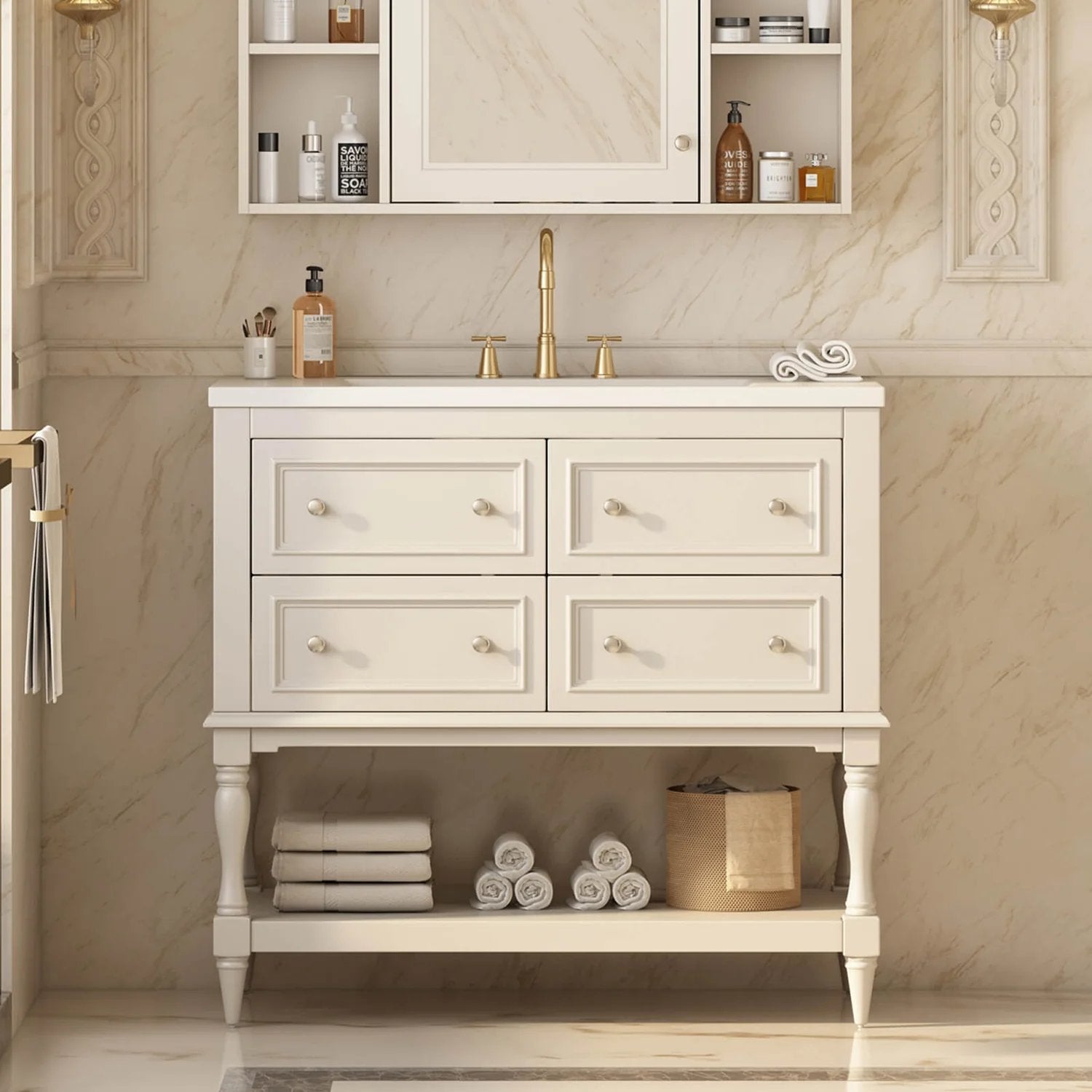
Standard Bathroom Vanity Dimensions
When purchasing a bathroom vanity, width, depth, and height are the three critical dimensions to consider. Based on market research and Giving Tree Home's customer data, 30-inch wide vanities are among the most inquired-about sizes. Common width options on the market include 24, 30, 36, 48, 60, and 72 inches. However, it's important to note that these aren't fixed standards—the ideal size should depend on your bathroom's actual dimensions and layout.
In terms of depth, most vanities fall between 17 and 19 inches. For narrow spaces, slim-profile vanities with depths between 13 and 15 inches are also available, though they are less common due to lower market demand.
Vanity height plays a more significant role in user experience. Vanities that are too tall require excessive arm lifting, causing shoulder strain, while shorter ones can lead to back pain from bending. The generally accepted standard height ranges from 30 to 34 inches.
Guide to Choosing Vanity Dimensions
Width Selection
The key principle in selecting vanity width is matching it to the overall bathroom layout. In compact bathrooms, usually around 3-5 square meters, it’s best to opt for vanities under 30 inches wide. Choosing a 48-inch vanity in such a space would feel overwhelming and reduce maneuverability and storage efficiency. A 24 or 30-inch vanity, on the other hand, provides essential functionality while maintaining open space.
For larger bathrooms over 10 square meters, vanities over 48 inches are ideal. They deliver a grander, more luxurious feel and ensure visual balance. In upscale master baths, a 60- or 72-inch double-sink vanity enhances both convenience and aesthetic value.
Vanities between 30 and 48 inches are considered versatile. They work well in medium-sized bathrooms and provide ample storage and surface space without overwhelming the room.
Depth Selection
In narrow bathrooms, vanity depth becomes crucial. Slim vanities (13–15 inches deep) can significantly save horizontal space. While these options are less common and may require extra effort to source, they are ideal for narrow bathrooms often found in older homes, where space optimization is key.
Height Selection
Though the standard range is 30–34 inches, 36-inch-high vanities are often preferred by taller individuals. For someone 6 feet (183 cm) tall, a 36-inch vanity reduces the need to bend over, increasing comfort and reducing fatigue during regular use.
For households with disabled individuals, floating vanities are highly recommended. These wall-mounted vanities leave space underneath for wheelchair access. Even in homes without accessibility needs, floating vanities offer flexible installation height options, accommodating adults and children alike.

Shop Bathroom Vanities by Size
How to Measure for a Bathroom Vanity
If you're planning to replace your old vanity with a new one and wish to maintain the same dimensions, precise measurement is the first and most crucial step. Begin by preparing your tools: a tape measure, paper, and pen. It's essential to use a high-precision tape measure to ensure the accuracy of your data, and keeping a pen and paper handy allows you to jot down measurements immediately to avoid forgetting them.
Before measuring, clear out any clutter or obstructions in the installation area to keep the space clean and accessible. Whether you're measuring height, width, or depth, the method is generally the same: stretch the tape measure from one end to the other, ensuring it is flush against the surface, then read and record the value promptly. For instance, measure width from the left edge of the vanity to the right, depth from the front edge to the back, and height from the floor up to the top of the vanity.

Some users may only want to replace the vanity base cabinet. While it's possible to estimate cabinet height by subtracting the countertop height from the total vanity height, it's highly recommended to remove the countertop and measure the cabinet directly for accuracy. Although dismantling the vanity may take extra effort and time, it's a worthwhile step to avoid incorrect measurements that could result in installation issues or poor final appearance.
Critical to Bathroom Vanity Size
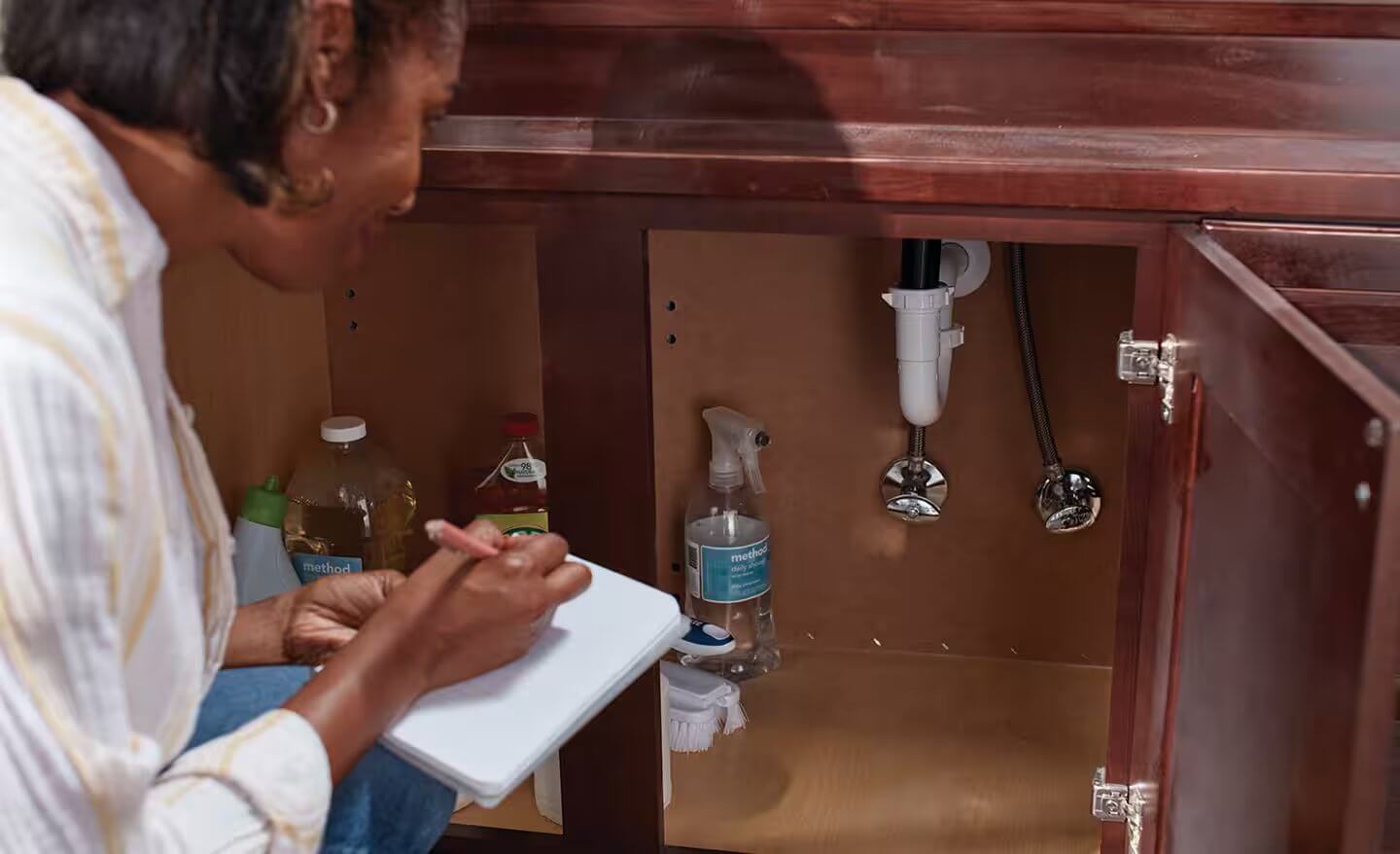
Plumbing Considerations
When measuring and selecting a vanity, always factor in the position of pipes and drainage lines. Their placement directly impacts where and how your vanity can be installed. For instance, if the plumbing is close to the wall, make sure your floor-standing vanity has enough space at the back to accommodate it. Double vanities require even more planning and pipe clearance, so make sure to consider this during the design and measurement stage.
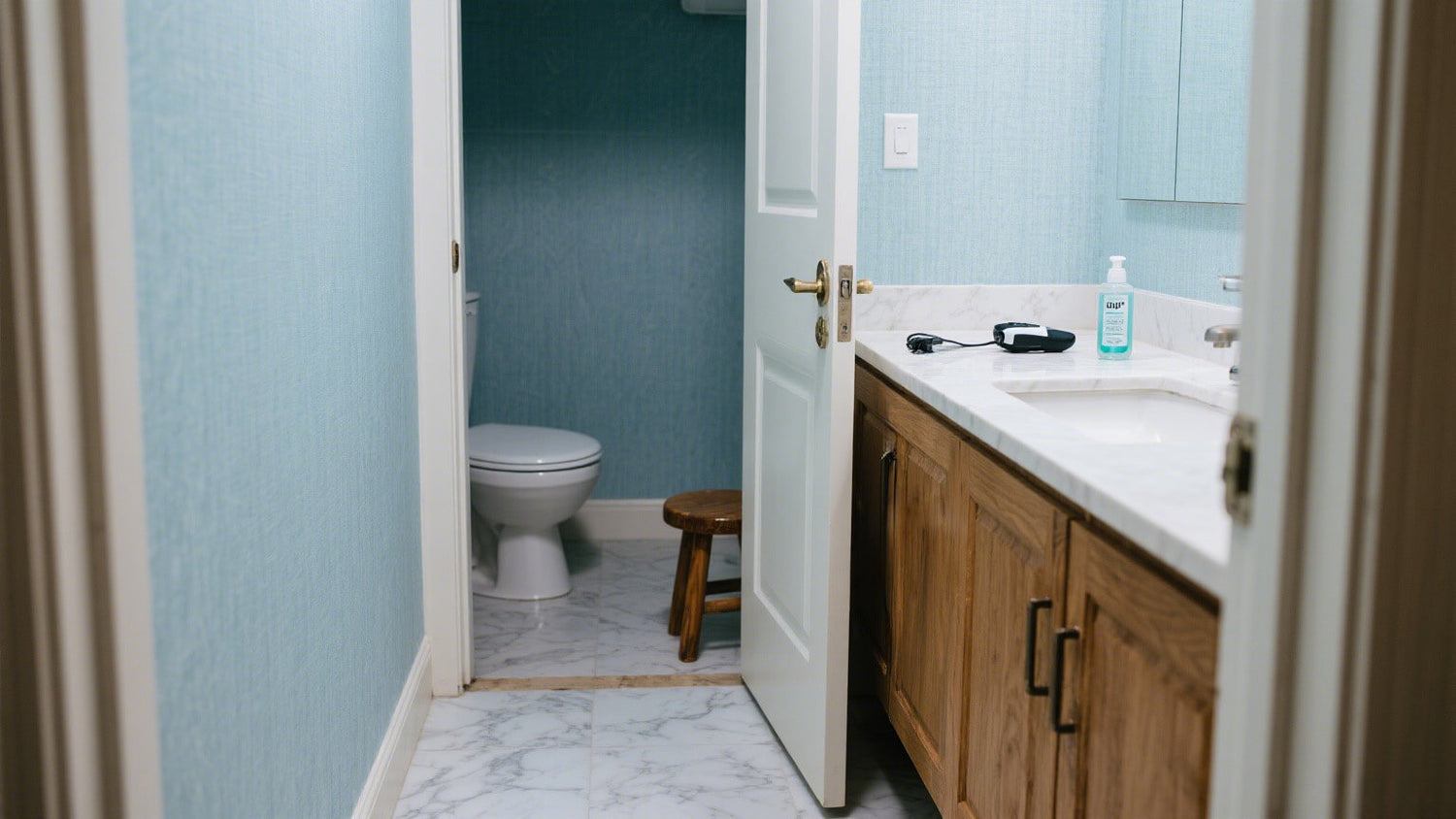
Bathroom Door Clearance
The way your bathroom door opens is a crucial factor. Measure the distance from the wall to the door edge to ensure the vanity won’t block the door’s swing. If your door opens inward and the vanity is installed too close, the door might not open fully or could hit the vanity.
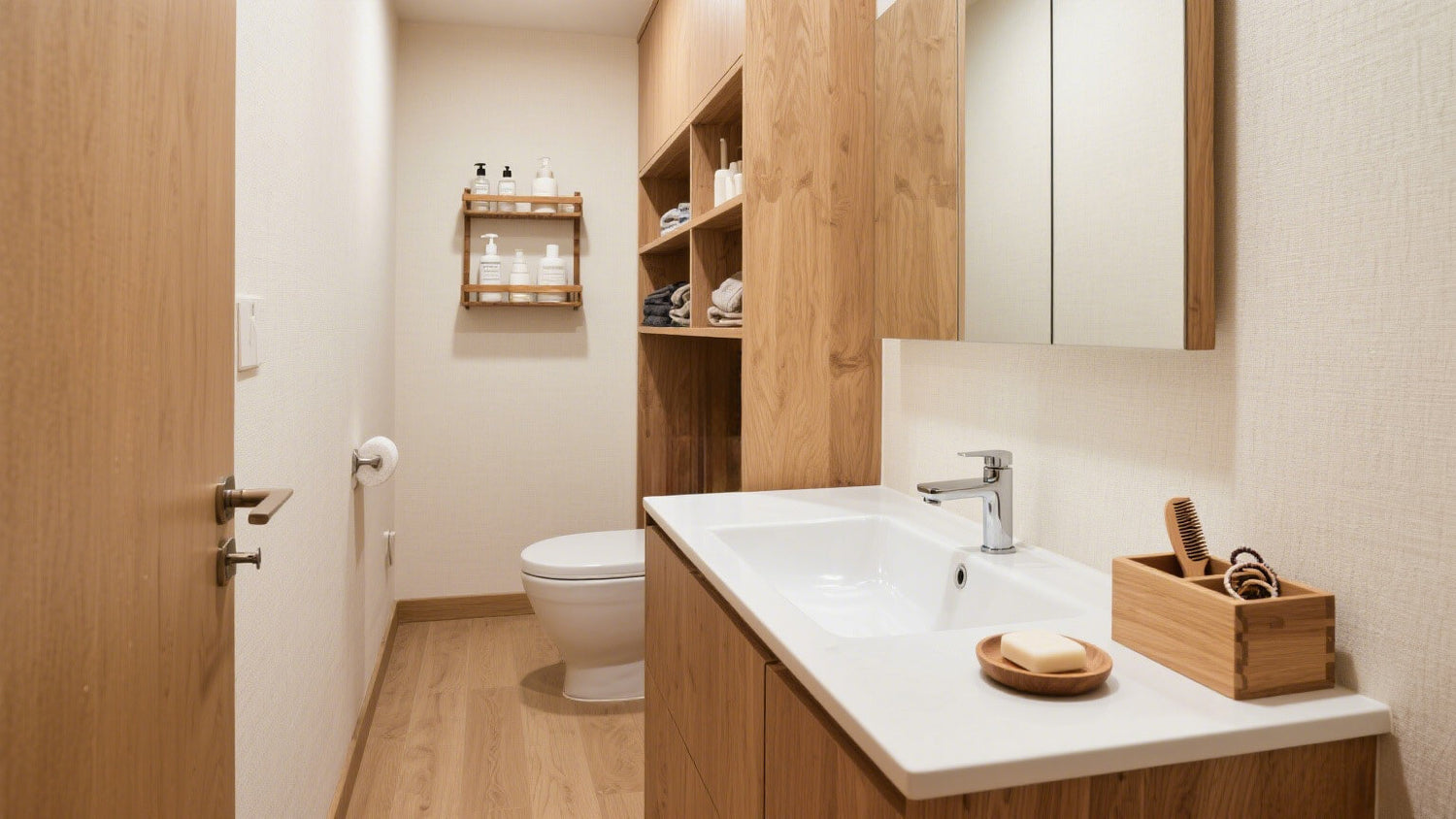
Clearance Space in Front of Vanity
You need to leave sufficient open space in front of the vanity to ensure ease of use. Typically, at least 24 inches (about 60 cm) of clear space is recommended so that you can open cabinet doors or drawers and move freely.

Considerations for Children
Shorter vanities are often suitable for children, allowing them to wash up easily. However, keep in mind that children grow quickly. A vanity that fits now may be too short in a few years. When choosing a vanity for children, consider adjustable-height options that can accommodate different growth stages for long-term use.
Ending
At Giving Tree Home, we not only provide expert advice on selecting the right vanity size but also offer a wide range of stylish, high-quality bathroom cabinets to suit every space and lifestyle. Whether you're upgrading a small guest bath or designing a spacious master ensuite, we’re here to help you find the perfect fit. If you’re unsure about measurements or need guidance on installation, don’t hesitate to reach out—our team is always ready to assist you.
More Ideas
-

Floating Bathroom Vanities Make Your Bathroom Feel Less Crowded
In today's high-value real estate market, bathrooms are often among the smallest spaces in a home. This is especially true in urban apartments, where cramped bathrooms can feel claustrophobic and...
-

Is a Floating Vanity Safe? Find Out If It’s Right for You
Can floating bathroom vanities truly handle the pressure of daily use? Will it stay secure? Is there a risk of it falling off the wall? In this article, we’ll explore...
-

Which Wood Is Best for Bathroom Vanity Cabinets?
Therefore, when choosing a wooden vanity, you should look beyond its appearance and understand the characteristics of different woods to find the best fit for a bathroom environment. Let’s uncover...
-

How to Install a Floating Vanity
Floating or wall-mounted vanities have become increasingly popular in modern bathroom renovations thanks to their clean lines and minimalist aesthetic. If you're considering buying one but feel unsure about the...
-

Standard Bathroom Vanity Sizes and How to Measure
Choosing the right size for a bathroom vanity isn't just about aesthetics—it directly affects comfort, space efficiency, and the overall harmony of your bathroom design. A poorly sized vanity can...
-

Horow Toilet Review – Is It a Good Toilet Brand?
When searching for a suitable toilet for your home, you may have frequently come across the brand Horow on various platforms. Whether through Google search or popular marketplaces like Amazon...

